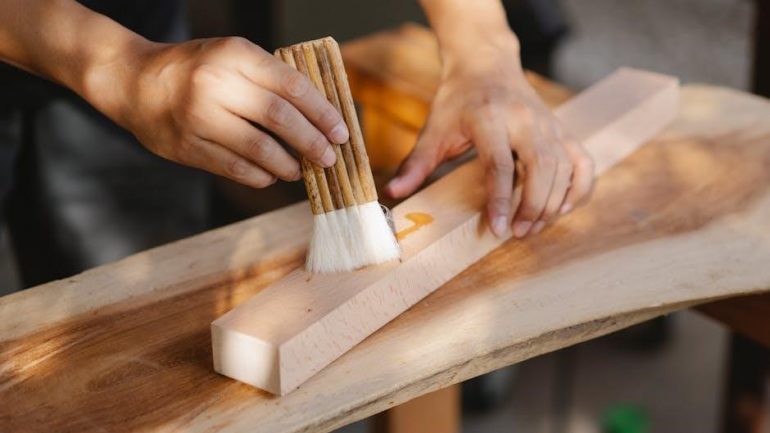EZ Sand Polymeric Sand is a trusted mix of graded sand and binder for paver installations, providing a fast and effective solution with easy installation and water erosion resistance, using
- simple steps
․
Overview of EZ Sand Polymeric Sand
EZ Sand Polymeric Sand is a unique mixture of graded sand and binder, designed for use in paver installations, providing a fast and effective solution for filling joints and preventing water erosion․ This polymeric sand is easy to work with and starts to set within a few minutes of activation, quickly becoming resistant to water erosion from rain, splashes, and sprinklers․ The sand is suitable for installations in light-duty environments and is a budget-friendly option․ It is a trusted and proven product, widely used in the industry for its effectiveness and ease of use․ With its simple installation process and quick setting time, EZ Sand Polymeric Sand is an ideal choice for homeowners and contractors looking for a reliable and efficient jointing solution․ The product is also resistant to dust and haze, making it a popular choice for outdoor installations․ Overall, EZ Sand Polymeric Sand is a high-quality product that provides a durable and long-lasting solution for paver joints․
Key Features of EZ Sand Polymeric Sand
EZ Sand Polymeric Sand has several key features that make it an ideal choice for paver installations․ One of the main features is its ability to flow smoothly down joints, making it easy to install and providing a fast and effective solution․ The sand is also resistant to water erosion, making it suitable for use in areas exposed to rain, splashes, and sprinklers; Additionally, the sand is easy to work with and starts to set within a few minutes of activation, quickly becoming resistant to water erosion․ The product is also budget-friendly and suitable for installations in light-duty environments․ With its unique mixture of graded sand and binder, EZ Sand Polymeric Sand provides a durable and long-lasting solution for paver joints․ The product is also designed to be resistant to dust and haze, making it a popular choice for outdoor installations․ Overall, the key features of EZ Sand Polymeric Sand make it a reliable and efficient choice for homeowners and contractors․ The product is widely used in the industry for its effectiveness and ease of use, and is a trusted and proven solution for paver installations․
Pre-Installation Instructions
Read the technical data sheet for specific instructions and prepare the area before installation begins slowly;
Checking for Water Accumulation
Before installing EZ Sand Polymeric Sand, it is essential to check for water accumulation in the area․ This involves inspecting the pavers or slabs for any signs of water damage or erosion․ The presence of water can affect the performance of the polymeric sand, so it is crucial to address any water accumulation issues before proceeding with the installation; A thorough inspection of the area should be conducted to identify any potential sources of water, such as clogged drains or uneven surfaces․ By checking for water accumulation, you can ensure a successful installation and prevent any future problems․ The area should be dry and free of any debris or obstacles that could interfere with the installation process․ Additionally, the pavers or slabs should be cleaned and prepared to provide a stable surface for the polymeric sand․ This step is critical in ensuring the longevity and effectiveness of the EZ Sand Polymeric Sand․
Blocking Access to Vehicular Traffic
After completing the installation of EZ Sand Polymeric Sand, it is crucial to block access to vehicular traffic to allow the joints to dry completely․ This involves restricting access to the area for a minimum of 48 to 72 hours, depending on the specific instructions provided by the manufacturer․ By blocking vehicular traffic, you can prevent damage to the polymeric sand and ensure it sets properly․ This step is essential in maintaining the integrity and stability of the pavers or slabs․ The area should be clearly marked with signs or barriers to prevent accidental access․ It is also important to inform residents, visitors, or other users of the area about the restriction to ensure their cooperation․ During this time, the polymeric sand will harden and become resistant to water erosion, providing a durable and long-lasting jointing solution․ Proper blocking of vehicular traffic is vital to the success of the installation and the overall performance of the EZ Sand Polymeric Sand․
General Installation Instructions
Follow specific polymeric sand instructions for a successful installation using proper techniques and tools․
Removing Existing Sand
The first step in installing EZ Sand Polymeric Sand is to remove all existing sand from the paver joints․ This is a crucial step as it ensures a clean and even surface for the new sand to adhere to․ Using a pressure washer or a garden hose with a spray nozzle, carefully blast out the old sand, making sure to remove all debris and dirt․ It is also important to use a wire brush or a small broom to scrub the joints and remove any remaining sand or dirt․ Once the old sand has been removed, use a leaf blower or a broom to clean out the joints and prepare them for the new sand․ This step may need to be repeated several times to ensure all old sand is removed, and the surface is clean and ready for the new polymeric sand․
Joint Width Requirements
EZ Sand Polymeric Sand works best when used to fill joints that are between 1 inch and 1․5 inches wide․ This is because the sand is designed to flow smoothly and evenly into the joints, and wider or narrower joints may not allow for proper compaction and setting․ Using a jointing tool or a small trowel, check the width of the joints to ensure they are within the recommended range․ If the joints are too wide, they may need to be adjusted or filled with a different material before installing the polymeric sand․ It is also important to note that the joint width may vary depending on the type of paver or stone being used, so be sure to check the manufacturer’s recommendations․ By following these guidelines, you can ensure a successful installation of EZ Sand Polymeric Sand and a beautiful, long-lasting finish․ Proper joint width is essential for a durable and stable pavement․
Post-Installation Instructions
Follow specific guidelines using
- steps
to ensure proper curing and maintenance of the polymeric sand installation for optimal results and longevity always․
Removing Excess Residue
Removing excess residue is a crucial step in the post-installation process of EZ Sand Polymeric Sand․ To do this, use a leaf blower at its lowest setting to gently blow away any excess polymeric sand residue from the surface of the pavers․ It is essential to angle the blower at roughly 30 degrees to ensure that you are not blowing the sand out of the joints․ This step helps to prevent any damage to the pavers or the surrounding areas․ By removing the excess residue, you can ensure a clean and even finish․ It is also important to note that the blower should be used at a low setting to avoid displacing the sand that has already been installed in the joints․ Using a leaf blower is a simple and effective way to remove excess residue and achieve a professional-looking finish․ Proper removal of excess residue is necessary for a successful installation․
Final Touches
After removing excess residue, the final touches can be applied to the EZ Sand Polymeric Sand installation․ This includes inspecting the pavers to ensure that the sand is evenly distributed and that there are no gaps or unevenness․ It is also essential to check the edges and corners of the pavers to ensure that they are secure and that the sand is properly compacted․ Any minor adjustments can be made at this stage to ensure a professional-looking finish․ The pavers should be checked for any signs of erosion or shifting, and any necessary repairs should be made․ By taking the time to apply the final touches, you can ensure that the EZ Sand Polymeric Sand installation is completed to a high standard and that it will last for a long time; Proper completion of the final touches is crucial for a successful and long-lasting installation, and it requires attention to detail and a thorough inspection of the pavers․


